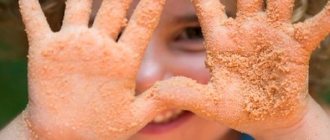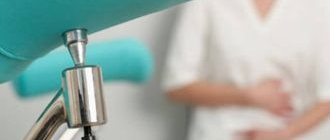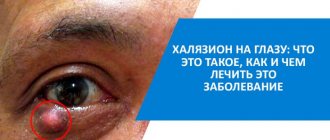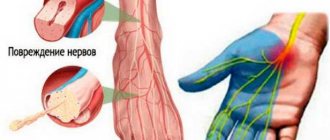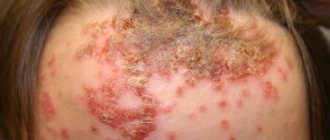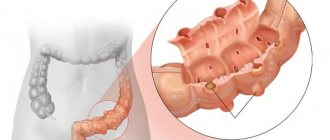Causes of development and risk factors
The main reason for the development of such a disease is the penetration of an infectious agent into the human body. In almost half of the cases, nasopharyngitis is provoked by rhinoviruses; in addition, it is caused by the following bacteria: streptococci, staphylococci, pneumococci, meningococci. Sometimes the causative agent is a fungus: as a rule, it is Candida - conditionally pathogenic yeast-like fungi that provoke the development of inflammation in the nasal cavity or the oral and nasal cavities at the same time.
Nasopharyngitis quite often becomes a manifestation of an allergy that originates in the nasal passages and then spreads to the pharynx (the reverse sequence is possible. It can be provoked by:
- book dust
- pet hair
- plant pollen
- food allergens
Factors contributing to the development of nasopharyngitis in adults and children include:
- deviated nasal septum
- injury to the nasal mucosa
- overgrowth of adenoids
- weakened immune system
- avitaminosis
- hypothermia
- smoking
In addition, the disease can be a consequence of congestion due to complications of pathology of the heart, kidneys or liver.
Causes of nasopharyngitis in adults
As it became known earlier, nasopharyngitis appears due to an infection that enters the body by airborne droplets.
Among all the pathogens, the following are the most common:
- rhinoviruses - the peculiarity of these viruses is the absence of an outer shell. This type of virus is capable of rapid reproduction and the release of generated populations through decay;
- streptococci - this type of virus lives in the respiratory and digestive tract of humans (mainly group A streptococci). Viruses are called parasites and can be easily transmitted through the air. You can get sick in winter or spring, when immunity is especially reduced. This type of virus rarely affects adults. More often it affects children from 4 to 16 years old;
- Staphylococci are bacteria that are divided into multiple subspecies. Some of them are quite safe and live in the human intestines, helping him process food. But there are others that live in the skin and nasopharynx. The cause of infection can be a sick person, wounds, deep cuts, from which pus is abundantly released. The incubation period for this type of bacteria always lasts differently. Sometimes they last a few days, and sometimes several years. It is possible to become ill through food or injections;
- Pneumococci are a type of bacteria related to streptococci. It causes meningitis, sinusitis and many other diseases.
- meningococci - this type of bacteria lives in the nasopharynx. You can get sick through carriers. Bacterial nasopharyngitis manifests itself in two cases: as a separate disease or as a form of an existing disease (for example, meningitis)
Classification
Depending on the nature of the course, nasopharyngitis occurs:
Acute - a form that is predominantly of viral origin, sometimes bacterial or allergic. In accordance with the etiology, nasopharyngitis is divided into:
- streptococcal
- staphylococcal
- chlamydial
- mycoplasma
- menigococcal
- fungal
- allergic
Chronic - mainly provoked by bacteria, sometimes fungi. Chronic nasopharyngitis, as a rule, is a consequence of the lack of adequate acute treatment.
The sluggish form of the disease also has a classification:
- catarrhal nasopharyngitis - superficial lesions of the mucous membrane of the nose and pharynx
- atrophic – the mucous membrane characteristically becomes thinner
- hypertrophic – the mucous membrane swells and thickens
The development of the acute form has three stages:
- dry irritation (up to 2 days)
- serous discharge
- permits (4 – 5 days). At this stage, the epithelium begins to peel off, and mucopurulent discharge appears.
Consequences and complications
As a result of the spread of inflammation to adjacent mucous membranes, the following may develop:
- eustachitis - begins with clicking, noise and pain in the ears, can lead to hearing loss;
- bronchial asthma – there is a high probability of its development in conditions of nasopharyngitis of an allergic nature;
- laryngotracheitis, bronchitis and pneumonia - such complications can develop when inflammation descends down the airways, which may be associated with weak immunity, neglect of the condition and regular hypothermia.
Symptoms and signs
Symptoms of nasopharyngitis vary depending on the age of the patient, the type and form of the disease.
In infants and older children it is characterized by such signs as:
- increase in body temperature to 38 - 39 degrees
- paroxysmal headaches, as well as pain in muscles and joints
- dry cough that gets worse at night
- severe itching and burning in the nasal cavity
- enlargement of the lymph nodes closest to the area of inflammation
- swelling of the nasal mucosa, causing it to stop breathing
- dyspnea
- sneezing
- nasal voice
- general weakness
- loss of appetite
- sleep disorder and tearfulness
Acute nasopharyngitis in adults manifests itself somewhat differently:
- dryness and inflammation of the mucous membrane of the nasopharynx
- pain when swallowing (sometimes) and a feeling as if there is something in the throat
- nasal discharge (liquid transparent mucus) and the formation of crusts from it
- headache
Unlike children, an increase in body temperature, severe general malaise and changes in the voice in adults with this disease, as a rule, do not occur.
Pain and noise in the ears, as well as decreased hearing, indicate the development of eustachitis - inflammation of the mucous membrane of the auditory tubes.
Stages and degrees
Nasopharyngitis in adults (symptoms and treatment require complex diagnostics) develops in stages:
| Name | Description |
| Incubation period | The hidden or latent stage of nasopharyngitis begins from the moment of infection of the human body until the first signs of the disease appear. This may take several hours or a couple of weeks, it all depends on the individual characteristics of the body. |
| Prodromal period | The disease at this stage is characterized by minor clinical symptoms. The period takes 1-3 days. |
| Active stage | A person develops severe symptoms of nasopharyngitis, which are present for 3-7 days. |
| Final stage | There is a complete recovery of the body or chronicity of the inflammatory process. |
Chronic nasopharyngitis is accompanied by periodic exacerbations, when the symptoms of the disease become pronounced. In any situation, it is unacceptable to carry out independent treatment.
An adult needs consultation with a therapist or otolaryngologist and medical treatment that will help prevent unpleasant consequences.
Diagnostic tests
The diagnosis of “nasopharyngitis” is made by an otorhinolaryngologist. Depending on the form of the disease, diagnosis may include the necessary of the following measures:
- history taking
- examination of the pharynx using a pharyngoscope
- rhinoscopy – examination of the nasal cavity
- computed tomography of the paranasal sinuses
- X-ray of the nasopharyngeal space
- blood analysis
- throat smear to determine the pathogen and sensitivity to antibiotics
- skin tests for suspected allergies
If necessary, the patient is also examined by a gastroenterologist and an endocrinologist.
How to treat nasopharyngitis in the acute stage
A sick older child is usually kept at home, but infants with a severe viral infection are hospitalized. A combination of medications is used to combat the causative virus and a set of hygiene procedures.
Baby care
Strict bed rest is mandatory. Since a viral infection causes intoxication of the body, the child needs to be given plenty of warm tea, water, non-acidic compote, and fruit juice. Meals should be light, rich in vitamins.
When the child sleeps and is in bed, it is better to use a high pillow to facilitate breathing
It is very important to keep the room clean, temperature 20-22 degrees, and avoid dry air. Daily wet cleaning is mandatory
Nasal rinsing
In case of nasopharyngitis, it is necessary to restore nasal breathing in the child as quickly as possible. To do this, the nasal cavity is cleansed of mucus and swelling is removed. For older children, rinsing with pharmaceutical or homemade products is suitable. Solutions of baking soda are used, as well as simple salt - a teaspoon per glass of boiled warm water.
It is very important to rinse your nose correctly. The child tilts his head over the sink, opens his mouth and sticks out his tongue. An adult fills a rubber bulb with the prepared solution, inserts its tip into one of the holes in the child’s nose and squeezes the bulb, gradually increasing the pressure. Rinsing will be useful and effective if the solution begins to flow out of the child’s mouth.
Treatment
What and how to properly treat nasopharyngitis? Since most often the disease is of viral origin, patients are prescribed antiviral drugs, although their effectiveness has not been fully proven and they do not affect the duration of nasopharyngitis, that is, they do not shorten it.
The main method of combating the disease is symptomatic treatment, including:
- taking antipyretic drugs at body temperatures above 38 degrees. The exception is pediatric patients who are prone to temperature cramps.
- the use of vasoconstrictor drops and sprays for the nasal cavity in case of difficulty breathing through the nose (used for no longer than 3 days by children and a week by adults)
- taking antihistamines for swelling (usually if nasopharyngitis is of an allergic nature)
- gargling with a solution of furatsilin or salt, as well as a decoction of chamomile or sage
- the use of local antiseptics in the form of tablets, lozenges, aerosols (medicines in the form of the latter are not suitable for people prone to allergies)
- rinsing the nasal sinuses with products based on natural sea water (sold in pharmacies)
Antibiotics are prescribed for bacterial nasopharyngitis in adults, while children in such cases are prescribed the use of an antibacterial nasal spray (Isofra).
An effective auxiliary measure in the fight against pathology is physiotherapy (Ural irradiation, UHF).
Patients are recommended to drink plenty of fluids (compotes, fruit drinks, freshly squeezed diluted fruit juices), a gentle diet, and avoid drinking alcohol and smoking. In the room where a person is located, it is necessary to maintain a cool temperature and a sufficient level of air humidity.
In some cases, to restore full nasal breathing, it is necessary to perform adenotomy (surgical removal of the adenoids), correction of the nasal septum, endoscopic nasal polypotomy and other interventions.
Nature of origin
Among adults, this form of rhinitis often appears after poorly treated treatment or an advanced stage of acute respiratory disease, which most often occurs in the autumn-winter season or early spring. Rhinopharyngitis can appear in the area of the nasopharynx, tonsils or in the lymphatic ring as a complication in people with weak immunity: in old age, with long-term use of antibiotics or with chronic inflammation of the nasopharynx.
According to the nature of origin (etiology), inflammation can be caused by:
- infection (viruses, bacteria or fungi);
- an allergic reaction of the body, when the inflammatory process begins in the presence of negative factors: animal hair, mold, dust, pollen, household chemicals, etc.
The main cause of nasopharyngitis is always an infection (ARVI or influenza), its pathogens attack the back wall of the mucous membrane. However, other factors also have an impact:
- severe hypothermia of the body;
- poor blood supply to the tissues of the nasopharynx;
- exposure to chemicals;
- the influence of allergenic factors in people with hypersensitivity;
- the body's reaction to a strong smell or cold air.
Prevention
There are no special preventive measures to prevent nasopharyngitis, but if you follow recommendations aimed at strengthening the immune system, you can significantly reduce the risk of the disease:
- exercise regularly
- carry out hardening procedures
- walk in the fresh air as much as possible
- eat well and include onions and garlic in the menu, which suppress the proliferation of bacteria and fungi; maintain a sleep schedule
- stop smoking and drinking alcohol
- during the period of exacerbation of ARVI, try not to contact with sick people and lubricate the outer parts of the nasal passages with oxolinic ointment
Nasopharyngitis is a common ENT disease that affects the mucous membrane of the nasopharynx, to which the human body reacts with pain in the throat, dryness and other unpleasant symptoms. To prevent the acute form of the disease from becoming chronic, it is necessary to consult a doctor in a timely manner and carefully follow all treatment recommendations.
General information
Nasopharyngitis is also commonly called rhinopharyngitis , rhinovirus infection , in more rare cases - rhinonasopharyngitis , epipharyngitis , or in everyday life - the common cold .
In this case, the inflammatory process affects the mucous membranes of the nasopharynx in response to a bacterial or viral infection and manifests itself in the form of redness, swelling, soreness, swelling, formation and release of fluid, mucus, pus or other types of exudate. The ICD-10 code for chronic nasopharyngitis is J 31.1. Catarrhal inflammation of the upper respiratory tract can cause pharyngitis, laryngitis and rhinitis ( runny nose ), as well as the development of low-grade fever , cough and difficulty breathing.
Infectious rhinitis, rhinorrhea (acute runny nose) and, in general, acute respiratory viral infections ( ARVI ) are a common problem for modern people - adults get sick at least 2-3 times a year, and small children - up to 10 times, with the peak falling in the off-season - spring. autumn time of the year.
Preventive actions
To avoid infection with nasopharyngitis, you need to carefully monitor your health. Carry out hygienic procedures to cleanse your nose regularly. The above-mentioned medications are suitable for this. You also need to humidify the air in the room you are in. Do not allow the mucous membranes of the nasal passages and larynx to dry out, drink more clean water. Don't forget about nutrition. The benefits of fruits and vegetables are undeniable. Through these products you can get a lot of vitamins and beneficial microelements. Create your own routine. Wake up at the same time, walk more in the fresh air. This will help prevent a runny nose and its consequences - nasopharyngitis.
During epidemics, try not to visit crowded places. If forced contact with an infected person, use antiviral agents for prevention purposes. However, this topic should first be discussed with your doctor.
If you feel the onset of the disease, then you should not try to carry it on your feet. Be sure to use medications and stay in bed. Sport also increases the body's resistance, but exercise should be moderate. At the first symptoms of the disease, do not try to eliminate it yourself. Remember that timely contact with a specialist is a guarantee of a quick recovery. Do not be ill!
Relieve swelling in the nose
Acute nasopharyngitis in children is often accompanied by severe swelling. Moreover, the younger the child, the more difficult the situation. In children, the disease often spreads to the ear area: an inflammatory process begins, accompanied by swelling. This is why it is so important to use medications to narrow blood vessels.
The most popular drugs are those based on oxymetazoline and xylometazoline. Naphazoline is used less frequently. The trade names of these drugs are as follows: “Snoop”, “Otrivin”, “Nazivin”, “Rinostop”, “Tizin” and so on. All medications are used for no more than 3-5 days strictly in the indicated dosage. Children are often prescribed the medication “Vibrocil”. It can be used for up to one week. The active ingredient of the drug is phenylephrine. It is also contained in the medicine “Polydex”. When combining these formulations, it is necessary to adjust the dose.
Antihistamines will also help in some way to relieve swelling of the nasal cavity. However, they do not work as quickly as topical medications.
Pathogenesis
Under the covering epithelium of the mucous membrane of the nasal septum in humans there are:
- a layer of loose fibrous connective tissue;
- layer of glands;
- a layer of dense fibrous connective tissue that covers the surface of cartilage and is rich in nerves and blood and lymphatic vessels.
In the vestibule of the nose, the mucous membrane is covered by stratified squamous keratinizing epithelium, which in the area of the septum turns into non-keratinizing, and then into ciliated multirow cylindrical epithelium. Goblet cells are found in the deep parts of the nasal cavity.
The nasal mucosa is formed by:
- Loose fibrous connective tissue, which includes cellular elements, fibers and capillary-type vessels.
- A layer of its own glands, which contains a large number of vessels. This layer also includes the serous glands.
- The mucous membrane of the nasal concha, which is also characterized by a layered structure.
A pathogen that enters the nasopharynx or becomes activated actively multiplies when immunity decreases. The process of reproduction in the nasopharynx of any pathogen causes expansion and increased permeability of blood vessels, as well as infiltration of the mucous membrane with leukocytes.
Nasopharyngitis in its acute form causes hyperemia of the mucous membrane and cellular infiltration of the follicles, and in some places rejection of the epithelium is observed.
The inflammatory process is most pronounced in places where lymphadenoid tissue is well developed - in the area of the nasopharynx and pharyngeal mouths of the Eustachian tubes.
Acute nasopharyngitis goes through three successive stages:
- The stage of dry irritation, in which dryness and hyperemia of the nasal mucosa are observed. Then the mucous membrane swells, the nasal passages narrow, making nasal breathing difficult, a nasal sound occurs, and taste sensitivity and smell decrease. This stage usually lasts several hours, but it can last longer (up to 2 days).
- Stage of serous discharge. At this stage, a large amount of clear serous fluid begins to be released, to which the mucous discharge produced by the goblet cells is gradually added. The mucous-serous discharge contains ammonia and sodium chloride, so irritation occurs in the upper lip area. Dryness and burning are replaced by copious discharge, nasal congestion and sneezing, and the mucous membrane becomes cyanotic.
- The stage of resolution, which is characterized by the presence of mucopurulent discharge. This stage begins 4-5 days after the onset of the disease. Since leukocytes, lymphocytes and exfoliated epithelium are added to the nasal secretion at this stage, the discharge acquires a yellowish-greenish tint. Over the course of several days, the amount of secretion decreases, and nasal breathing and general condition gradually return to normal.
The acute form of nasopharyngitis ends 8-14 days from the onset of the disease.
With good immunity, nasopharyngitis lasts 2-3 days, and in weakened patients it can last up to 4 weeks with the risk of becoming chronic.
Acute nasopharyngitis in children, due to its anatomical features (short and wide auditory tube, into which the contents of the nasopharynx easily enters), often develops into acute otitis media.
Contagious or not
A person infected with nasopharyngitis is dangerous to others only if the disease is viral in nature. Pathogen viruses are highly volatile. But we cannot say with complete certainty that a healthy person will get sick. It all depends on the state of his immune system, the presence of accompanying provocative factors, and the time of contact with the patient.
There is also no certainty that a healthy person will “get” nasopharyngitis, since viral pathogens can also cause the development of a number of other manifestations.
The allergic and fungal process is not contagious. Their occurrence is directly related to internal problems of the body.
Bacterial inflammation, purely theoretically, can be dangerous, but in practice it is very difficult to transmit. For a healthy person to become infected, direct contact with pathogenic microorganisms that are located on the mucous membrane of the nasopharynx or in purulent exudate is necessary. There must also be several provoking factors, a state of immunodeficiency.
Antiviral agents with immunomodulatory effects
Acute nasopharyngitis most often has a viral etiology. To correct this disease, appropriate medications are used. These are the well-known “Arbidol” and “Arpeflu”, “Anaferon” and “Ergoferon”, “Isoprinosin” and “Groprinosin”. They can not only eliminate a viral infection, but also increase immune defense. All medications described are intended for oral use. However, experts often recommend using local remedies. These are sprays and nasal drops “Irs 19”, “Derinat”, “Ingaron”, “Grippferon”, “Interferon” and so on. They can be used both for treatment and for preventive purposes.
To strengthen the body's resistance, vitamin complexes can be prescribed: “MultiTabs”, “Vita Mishki”, “Complivit” and many others. Always pay attention to the dosage of such products. It should be selected in accordance with the patient’s age and individual characteristics. Vitamin C plays an important role in increasing immune defense.
Treatment process for acute nasopharyngitis in children
To ease the course of the disease in children, doctors advise following some recommendations:
- the temperature in the room should not be higher than twenty degrees;
- it is necessary to ventilate the room two to three times a day and humidify the air;
- maintain bed rest for several days;
- Be sure to follow the drinking regime. If your baby refuses to drink, give him a spoonful of water every ten minutes. At the same time, he should be offered not only water, but also natural fruit drinks, compotes, tea;
- You should not force a sick child to eat. At night you can give a mug of warm milk with honey. This will help increase the child’s strength and quickly cope with viruses or bacteria.
- Carry out wet cleaning using disinfectants every day.
Treatment of nasopharyngitis in children involves drug therapy:
- you need to take antiviral drugs to fight the virus. Children under one year of age are prescribed Viferon suppositories or Anaferon tablets. Older children can take Ergoferon tablets. It is recommended to drip Interferon or Grippferon into the nose. The duration of the treatment course is five days;
- in extreme cases, when there is severe nasal congestion and difficulty breathing, the use of vasoconstrictor drops is prescribed. For children under one year old, I advise you to take Vibrocil or Nazivin for children. For older children, Otrivin, Nazik, Snoop are prescribed. The duration of the treatment course should not exceed three to four days;
- Prescribe medicinal oil drops in the form of Pinosol. They contain essential oils that help fight infection in the nose and make breathing easier. In addition to all this, flowing down the back wall, they soften the accumulated crusts;
- Doctors recommend taking antiallergic drugs in childhood. They relieve swelling, lacrimation and excessive mucus secretion. Children are prescribed drops in the form of Fenistil or Zodak, in syrup in the form of Erius and in tablets in the form of Suprastin;
- Lozenges are prescribed for children over three to four years of age. Often. To cure a sore throat, experts recommend taking Lizobact or Faringosept. Children over six to seven years old can use Grammidin or Septolete;
- The throat should be irrigated with antiseptic drugs. In infants, Miramistin is prescribed, and children from three to four years old can spray Tantum Verde or Hexoral into the oral cavity.
- Children from five to six years old can begin to gargle independently under the supervision of their parents. For such purposes, you should use Furacilin, sea or table salt and infusions of chamomile, sage, and calendula. It is recommended to carry out the procedure up to eight to ten times a day. Gradually the number of rinses is reduced to five times;
- Children under five years old should lubricate sore throats with adults. For such purposes, you can use Lugol, Chlorophyllipt;
- take drops in the form of Tonsilgon. They help reduce pain in the throat. Relieve redness and swelling. Should be given to children at least two years old;
- To cure a runny nose, you need to perform a nasal toilet. Infants should instill saline solution and clean the nose with an aspirator or cotton swab. Children over three years old should rinse their nasal passages using a small bulb with the addition of a solution of sea salt. In this case, the child's head should be tilted to the side so that the liquid does not get into the ear.
- To eliminate dry cough, Sinekod or Gerbion are prescribed. When coughing up mucus, it is recommended to take Ambrobene, Abromhexal or Lazolvan.
Antibacterial drugs are prescribed only when bacteria have become the causative agent. They are prescribed after an appropriate examination.
For chronic rhinopharyngitis, doctors recommend strengthening procedures for immune function during the period of remission. You need to do exercises every day, harden yourself and send your child to a sports section. Two or three times a year it is worth carrying out therapy, which involves taking immunostimulating agents and vitamin complexes.
The child also needs to be shown to the dentist so that he can conduct an examination and remove all carious formations.
Don't forget about daily walks outside. Once a week you need to go to nature in the forest.
If you do not follow the above rules and the doctor’s recommendations, the child may develop complications in the form of otitis media, a prolonged bacterial runny nose, or infection in the lower respiratory tract. If nasopharyngitis appears in children, then you should not hesitate to visit a doctor and begin the treatment process as soon as possible.
Diagnosis of nasopharyngitis
For a sick child, a doctor must be called to the home. The examination is carried out by a pediatrician, who may recommend consultation with an otolaryngologist. When making a diagnosis, the doctor is guided by the parents’ description of symptoms and the results of the examination.
A deeper diagnosis is made when the disease becomes protracted. In this case, a swab from the nasopharynx is examined, and a blood test is also prescribed.
During the presence of a chronic disease, additional computed tomography of the nasopharynx and sinuses, nasal endoscopy, and x-rays are performed. Consultations with other doctors, for example, a pulmonologist or gastroenterologist, are considered mandatory.

